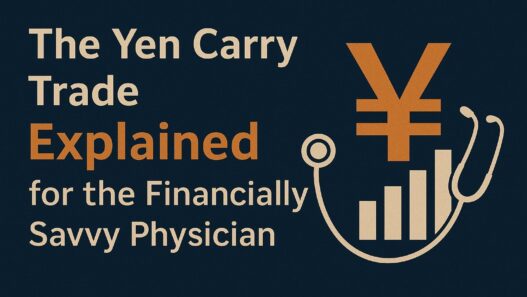On January 1, 2025, Medicare began reducing physician payments by 2.8%. This cut, the latest in a long string of financial setbacks, is yet another blow to healthcare providers who have already been struggling to stay afloat.
The bottom line: Medicare physician payments have dropped 33% since 2001 when adjusted for inflation, while practice costs continue to rise. This 2025 reduction affects over 1 million physicians nationwide and could impact care access for 65+ million Medicare beneficiaries.
This marks the fifth consecutive year that Congress has failed to implement a meaningful solution, allowing reimbursement rates to steadily shrink. For physicians, the aftermath is both financial and threatens the sustainability of practices and the quality of care for millions of Medicare beneficiaries.
How the 2.8% Medicare Cut Affects Different Medical Specialties
The impact varies significantly across specialties based on their Medicare patient volume. The Most Affected Specialties are:
- Primary Care Physicians: Average 40-60% Medicare patient load
- Cardiology: Typically 35-45% Medicare patients
- Oncology: Often 50%+ Medicare patients
- Rural Family Medicine: Can exceed 70% Medicare patients
Lower Impact Specialties:
- Cosmetic Surgery: Minimal Medicare involvement
- Concierge Medicine: Direct-pay models
- Some Specialty Procedures: Higher private insurance rates
The impact of these cuts goes beyond just numbers on a page. Physicians are already dealing with increased patient loads, rising operational costs, and pressure to maintain high-quality care in an increasingly challenging environment.
Medicare Physician Fee Schedule: 2025 Payment Rates vs. Practice Costs
According to the American Medical Association (AMA), when adjusted for inflation in practice costs, physician payments under Medicare have plummeted by a staggering 33% since 2001.
Source: American Medical Association
Key Statistics for 2025:
- Medicare payment reduction: 2.8% effective January 1, 2025
- Cumulative inflation-adjusted loss: 33% since 2001
- Practice cost increases: 5-8% annually in recent years
- Administrative burden: 25% of practice resources spent on compliance
While expenses related to staffing, technology, and overhead have surged, physicians have been left to shoulder the gap, even at the expense of their own financial stability.
In December 2024, Congress passed the American Relief Act of 2025, a measure that failed to address the scheduled 2.8% payment cut. The continued inaction is both frustrating and concerning, while physicians are left trying to subsist in an environment that feels increasingly unsustainable.
AMA National Advocacy Conference 2025: Fighting Medicare Payment Cuts
As a result, the American Medical Association (AMA) organized the National Advocacy Conference in Washington D.C. from February 10-12, 2025.
The aim of this conference was, in part, to highlight the damage being caused by the payment cuts and to urge Congress to pass a bipartisan bill that will update physician payment according to the current economic climate.
AMA Advocacy Efforts Include:
Lobbying Congress to reverse the 2.8% cut and implement a long-term solution to stabilize Medicare payments. Through research and advocacy, the AMA has worked to underscore the real-world consequences of these cuts.
Unfortunately, “stabilizing the healthcare system” doesn't generate the same media buzz as other political priorities. But this work is vital for the future of healthcare in America.
Securing Annual Inflationary Updates to the Medicare Physician Fee Schedule to ensure that reimbursement rates keep pace with the increasing costs of delivering care.
Telehealth Extension Success: The AMA successfully lobbied for a temporary extension of telehealth services through March 31, 2025, allowing Medicare beneficiaries to access care remotely, to increase care access in rural and underserved areas.
MedPAC Acknowledgment: The Medicare Payment Advisory Commission has publicly acknowledged that current reimbursement rates are insufficient, which the AMA is leveraging to advocate for structural reforms.
The 2026 AMA National Advocacy Conference has set its agenda to stop medicare payment cuts to protect seniors' access to healthcare and highlighted the need for comprehensive physician payment reform.
Why 2025 Medicare Cuts Matter to Physicians and Patients
The 2025 cuts couldn't have come at a worse time. Physicians are already grappling with unprecedented challenges:
Rising Practice Costs in 2025
- Inflation Impact: Medical supplies and staffing costs are up 5-8% annually
- Staff Shortages: High turnover in nursing and administrative support
- Technology Costs: EHR updates, cybersecurity, telehealth infrastructure
- Compliance Burden: 25% of practice resources devoted to Medicare regulations
Rural Physician Impact
Rural doctors face the most severe consequences. For many rural physicians, Medicare reimbursement constitutes 60-70% of their income.
If these cuts continue, rural practices could be forced to close their doors, leaving entire communities without access to care.
Specialty-Specific Consequences
- Primary Care: May limit new Medicare patient acceptance
- Specialists: Could reduce availability for Medicare referrals
- Surgical Procedures: May impact elective surgery scheduling
- Mental Health: Psychiatrists are already limiting Medicare patients
Medicare Payment Reform: What Needs to Change in 2025
If we're to avoid further damage to the healthcare system, policymakers need to move beyond temporary fixes:
Immediate Actions Needed
- Reverse the 2.8% Cut: Restore 2024 payment levels
- Annual Inflation Updates: Automatic cost-of-living adjustments
- Administrative Simplification: Reduce compliance burden
- Permanent Telehealth: Make remote care coverage permanent
Long-term Medicare Reforms
- Value-Based Care Integration: Align payments with quality outcomes
- Predictable Payment System: End annual uncertainty cycles
- Specialty-Specific Adjustments: Account for different practice costs
- Rural Practice Support: Additional payments for underserved areas
Healthcare System Impact Beyond Physician Payments
Medicare rates serve as a benchmark for other payers. When Medicare reduces physician payments, the effects ripple through:
- Medicaid Programs: Often follow Medicare rates
- Private Insurance: May use Medicare as baseline
- Workers' Compensation: References Medicare rates
- Patient Access: Reduced physician participation in Medicare
As reimbursement rates decrease, some physicians may no longer be able to afford to accept Medicare patients, leading to a decline in access to care for vulnerable populations.
How Physicians Can Respond to 2025 Medicare Cuts
Practice Management Strategies
- Revenue Diversification: Expand non-Medicare services
- Efficiency Improvements: Streamline administrative processes
- Technology Adoption: Invest in productivity-enhancing tools
- Staff Optimization: Cross-train employees for multiple roles
Advocacy Opportunities
- Join AMA Advocacy: Register for the February 2025 National Advocacy Conference
- Contact Representatives: Use AMA's online advocacy tools
- State Medical Societies: Coordinate local lobbying efforts
- Patient Education: Inform Medicare patients about access risks
The Path Forward: Medicare Payment Sustainability
The continued erosion of Medicare reimbursement rates threatens the stability and quality of healthcare physicians can provide to millions of Americans. While the AMA and other organizations are working hard to push for reform, they can't do it alone.
Healthcare providers must raise their voices, demand change, and hold policymakers accountable. The 2025 Medicare payment cuts represent a critical inflection point – one that requires immediate action to preserve physician practices and patient access to care.
Key Takeaway: The 2.8% Medicare payment reduction, combined with rising practice costs, creates an unsustainable environment for physician practices. The AMA's February 2026 National Advocacy Conference represents a crucial opportunity for the medical community to push for meaningful reform before further damage occurs to the healthcare system.
For the latest updates on Medicare payment advocacy and physician resources, visit the AMA's advocacy portal and consider joining the February 2026 National Advocacy Conference in Washington D.C.
FAQ: Medicare Physician Payment Cuts 2025
Q: When did the 2.8% Medicare payment cut take effect?
A: The reduction began January 1, 2025, affecting all Medicare physician reimbursements.
Q: How much have Medicare physician payments declined since 2001?
A: When adjusted for inflation, Medicare physician payments have dropped 33% since 2001.
Q: Which medical specialties are most affected by Medicare cuts?
A: Primary care, cardiology, oncology, and rural practices with high Medicare patient volumes face the greatest impact.
Q: What is the AMA doing about the 2025 Medicare cuts?
A: The AMA is hosting a National Advocacy Conference February 10-12, 2025, and lobbying Congress for payment restoration and long-term reforms.
Q: How do Medicare payment cuts affect patient care?
A: Cuts may lead to reduced physician participation in Medicare, longer wait times, and potential practice closures, especially in rural areas.
Q: Are Medicare payment cuts permanent?
A: While the 2.8% cut is currently in effect, advocacy efforts continue to push for Congressional reversal and long-term payment stability.
Sources and References
- American Medical Association – Congress Fails to Stop 2.83% Medicare Payment Cut for 2025
- AMA Health Care Advocacy – Medicare Payment Reform Advocacy Update
- American Academy of Physical Medicine & Rehabilitation – Year-End Federal Legislation Update
- Dr. Catalyst – Medicare Cuts Physician Pay by 2.8%: Practice Impact Analysis
- Mississippi State Medical Society – Congress Fails to Stop Medicare Payment Cut



















